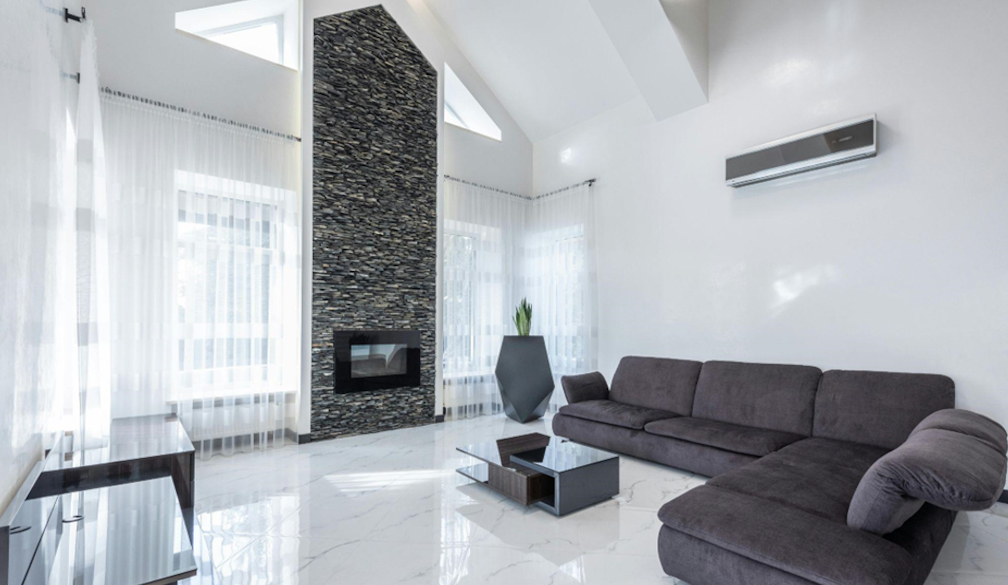Stay Cool and Green: Tips for Environmentally-Friendly AC

Air conditioning systems are no longer an item of luxury. With the rising global temperatures, the demand for wall mounted AC has increased significantly. But that also traps us into a vicious cycle.
While air conditioning systems help us stay cool in summer, they increase our carbon footprint and energy consumption. Suppose you want an economical alternative to staying cool during summer. In that case, eco-friendly air conditioning systems might be what you want.
You will also have to adopt certain lifestyle changes at home to ensure your electricity bills are not draining your wallet monthly.
So, if you want to receive these benefits, stay with us, and we explore them with you.
Tips For An Environmentally Friendly AC and Other Cooling Tips For Your Home
Look for R-32 Balanced Refrigerants in Your Wall Mounted AC
In the world that we live in right now, a 100% eco-friendly AC is yet to be. However, some manufacturers use environment-friendly solutions to manufacture air conditioning systems to keep the bills as low as possible and the planet clean.
Let's take, for example, the R32 refrigerant. The R32 is a balanced refrigerant that is quite popular in the market for good reasons. This refrigerant efficiently transfers the heat and cuts down electrical consumption by approximately 10% compared to other wall mounted ACs that use the refrigerant R-22.
Moreover, R-32's global warming potential (GWP) is 1/3rd lower than the other refrigerants used today.
Smart Thermostats For Intuitive Temperature Control
Smart thermostats are efficient devices that manage your home's climate. They learn your schedule to adjust temperatures when you're away, reducing energy use.
You can control them remotely via smartphones, and they provide energy usage reports to help you save more.
Additionally, they can integrate with other smart home devices for seamless home automation and use local weather data to make adjustments, potentially lowering your utility bills and conserving energy.
Work On Your Home's Ventilation
Fresh air is one of the best free and natural resources to keep your home cool, depending on the weather. For instance, you can keep your windows open at night to let the fresh air in and release the heat out.
The fresh airflow must be paired with other cooling methods on warmer nights to tone down the temperature. Techniques like using semi-transparent blinds and plants that provide shading and insulation are tried and tested techniques of green air-conditioning.
Green Rooftops For Heat Absorption
Green roofs or rooftop gardens, which are vegetative layers grown on rooftops, also contribute to cooling by providing shade, removing heat from the air, and reducing the temperatures of the roof surface and surrounding air.
Green rooftops reduce temperatures and electricity bills by:
Insulating Buildings: They provide a natural barrier against heat.
Evapotranspiration: Plants release moisture, cooling the air.
Providing Shade: They block direct sunlight, reducing heat absorption.
Decreasing AC Use: Less indoor heat lowers the need for air conditioning.
Mitigating Heat Islands: They help cool urban areas, reducing overall city energy demand.
Extending Roof Life: They protect the roof from UV and physical damage, saving maintenance costs.
Evaporation Coolers For Natural Cooling
Evaporative coolers, often called swamp coolers, use water evaporation to cool the air. They work by drawing warm outside air through water-saturated pads.
As the air passes through these pads, water evaporates and absorbs heat, which reduces the air temperature. After being cooled, the air is distributed throughout the building.
Evaporative coolers consume significantly less electricity than traditional air conditioners using refrigerant cycles to cool air.
This makes them more energy-efficient and environmentally friendly, as they do not rely on chemical refrigerants, which can harm the environment.
However, evaporative coolers are less effective in humid environments, as the already moist air hampers the evaporation process, leading to less cooling and increased humidity inside the building.
In Conclusion
Staying cool and eco-friendly can go hand-in-hand with the right choices in air conditioning systems. Opt for evaporative coolers in arid regions or harness passive cooling through innovative building design.
Small changes, like adopting solar-powered AC units or integrating vegetation for natural insulation, make a big impact. This is our collective stride towards a sustainable future—cooling our homes while caring for our planet.
Let's prioritise green AC solutions that benefit our bank accounts and the environment. It's more than comfort; it's a commitment to a cooler, greener earth.



